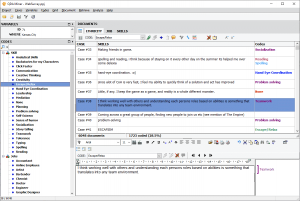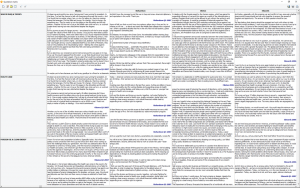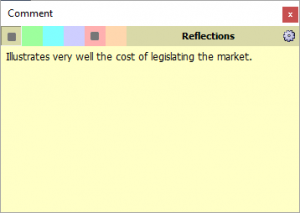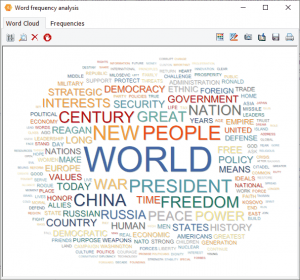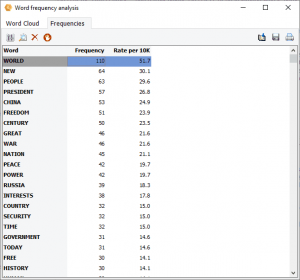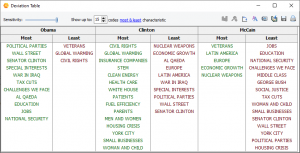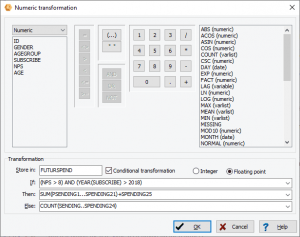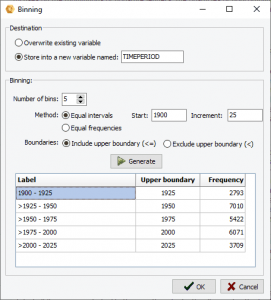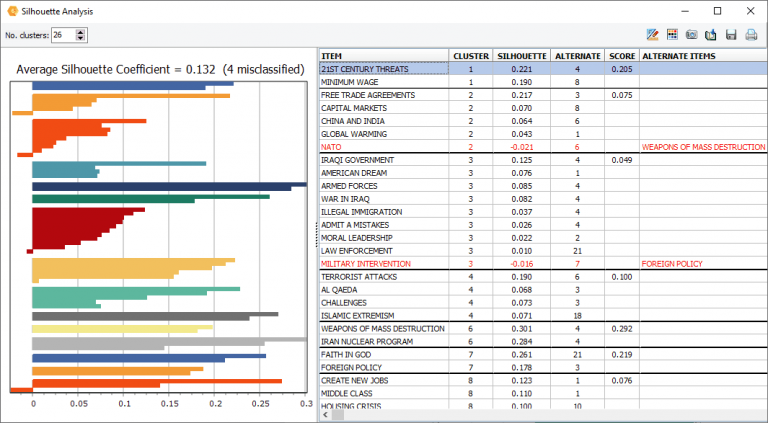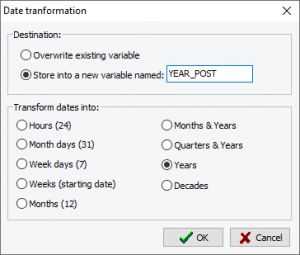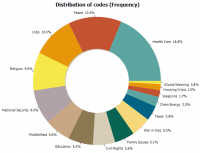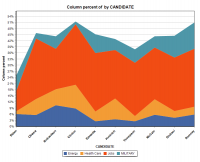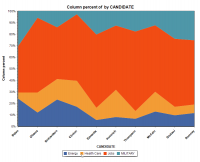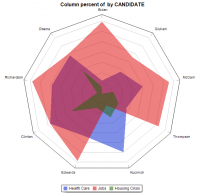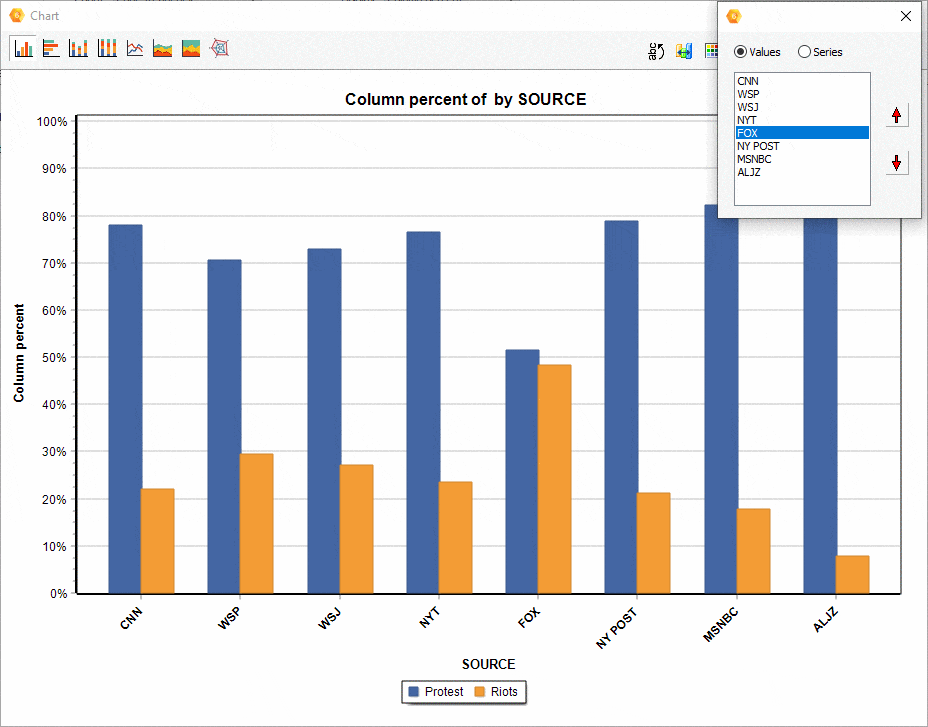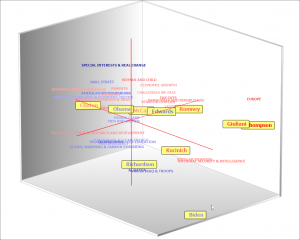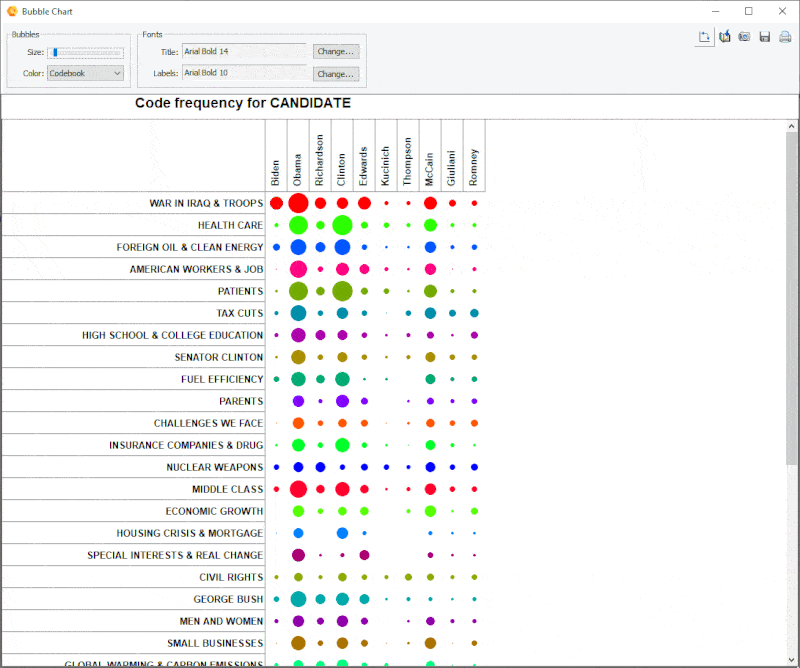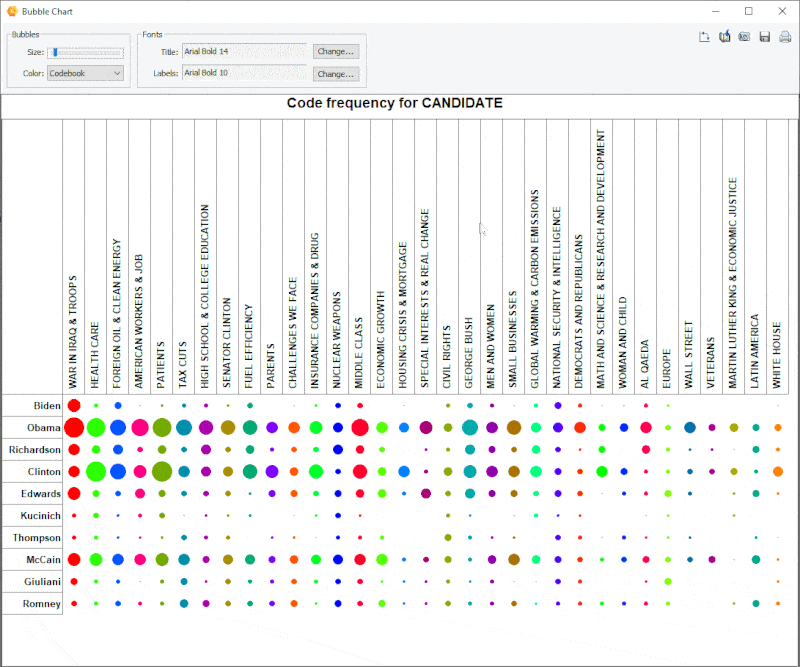 |
|
What's New in Version 6?
QDA Miner 6 has many new features to help you more easily code and analyze open-ended questions and short comments with the new Grid Display. The new Quotation Matrix lets you see quotes about various subjects or look at a certain actor’s comments on a particular subject or all their comments on all subjects. A new Interactive Word Cloud gives you the ability to create interactive word clouds resulting from different analysis features. You can remove selected “noise” words or change the attributes to obtain an accurate understanding of the analyzed unstructured content. Research analysts can dynamically change the word cloud in as little as 1-2 clicks. New importation features let you import news articles directly from Factiva and LexisNexis. There are new capabilities to import and analyze Asian languages such as Chinese, Thai and Japanese.
1. New Grid view mode for coding short responses
While appropriate for coding long documents, the standard document/case centric view of QDA Miner was less suited for coding short text responses such as response to open-ended questions or short comments. Now, QDA Miner 6 introduces a new grid view mode that provides a convenient and very efficient way to code this kind of text data. It is useful for everyone coding any type of open-ended comments, including surveys, employee comments, customer comments and allows one to quickly identify trends in a survey or major support issues that need to be addressed. It includes features such as:
- Drag-and-drop coding and annotation.
- Filtering of responses using text search expressions with Boolean operators
- Filtering of responses based on the number of codes (uncoded, coded, more than n codes, etc.) as well as on the presence or absence of specific codes.
- Sorting of rows either alphabetically, on text length, number of codes, or case number.
- Displays the number and percentage of coded responses,
- Computation of word clouds and word frequency analysis on text currently displayed in the grid.
2. Quotation Matrices
The quotation matrix allows you to create a large grid containing all coded text segments and/or comments where each cell represents the intersection of a specific code with either a specific case or a value of a categorical or numerical variable (age group, gender, source, etc.). Such a joint display provides a compact view of coded material ideal for reviewing work done by coders. More easily identify patterns, creating dense summaries of results, etc. This matrix may be created from the new RETRIEVAL | QUOTATION MATRIX command to obtain a codes x cases quotation matrix or from the ANALYSIS | CODING BY VARIABLES command for displaying coded materials by all values of a variable. It supports the following features:
- Displays either all comment types or specific ones based on subject, speaker etc.
- Text in each cell can be edited in with a rich text editor (font style, size and color, paragraph formatting, etc.)
- Multiple memos can be attached to individual cells.
- Rows and columns may be transposed.
- The matrix can be exported to disk in various formats, including Excel, CSV, TSV and a new PGRD format allowing one to review and edit the table outside of QDA Miner using a free grid viewer/editor.
3. Enhanced annotation feature
It is now possible to attach up to six types of comments to a single code mark. Annotations may serve different purposes such as formulating hypothesis, communicating concerns with team members, summarizing, etc. You are no longer restricted to a single comment type. The removal of such limitation and the introduction of the quotation matrix feature (see above) offers new possibilities for generating condense view of summaries, concerns, hypotheses, etc. It gives you much more flexibility on how to instruct, explain codes, pose, and answer questions.
4. Word Frequency Analysis and Word Cloud
Interactive word clouds and word frequency tables can now be obtained on any document variable or on results of retrieval operations (text, coding, section or keyword retrieval) as well as for a single document or for text displayed in the new grid view. One may tailor the word cloud (font, color, shape, etc.), customize stop words lists and perform text searches from it or from the associated word frequency table.
5. Importation of Nexis UNI and Factiva Files
It is now possible to import news transcripts from the LexisNexis and Factiva output files. After selecting one or multiple .DOCX or RTF files obtained from those services, QDA Miner will extract and store in separate variables the title and body of the news transcript, its source, the publication date, and other relevant information. Such a feature should prove useful for reputation management, brand management, crisis communication, media framing analysis, comparative media studies, etc.
6. Improved Importation of Excel, CSV and TSV files.
When importing files from Excel, CSV or TSV files a new wizard dialog box will allow you to select variables, rename them, import variable description, and perform batch data type conversions This gives you greater flexibility to set up your analysis, make it more precise and start it more quickly, saving time and resources.
7. Deviation Table
The CODING BY VARIABLES feature now offers the possibility to produce a deviation table that allows one to obtain a list of codes most or least characteristic of different values of an independent variable as compared to other classes of this variable.
8. Export Results to Tableau Software
One can now export results to Tableau Software allowing one to use its advanced interactive data visualization tools. This feature is available from the CODING FREQUENCY and the CODING BY VARIABLES dialog boxes.

9. Numerical Transformation
A new numerical transformation dialog box allows you to compute numerical variables from other variables with up to 50 transformation functions including trigonometric, statistical, random number functions. Conditional transformation can also be performed using an IF-THEN-ELSE logical structure.
10. Binning
A binning feature can now be used to transform continuous values into a smaller number of distinct categories. It may be used to reduce the effect of numerical outliers, abnormal distributions, or convert a continuous numerical variable into an ordinal one. It is especially useful for creating graphic displays of comparisons when the number of distinct values in the numerical variable is too high.
11. Support of Missing Values
You can now associate to numerical, categorical, and short string variables up to three values that will be treated as missing data.
12. Silhouette plot
A new silhouette plot feature has been added to the hierarchical cluster analysis, allowing one to assess the quality of the cluster solution and identify potential misclassified items.
13. Date transformation
Date and date and time variables can now be used to create other categorical or numerical variables such as months, days or weekdays, months, years, etc.
14. Improved code filtering feature.
The code filtering feature may now be used to filter cases based on the presence, the absence of specific codes or combinations of codes.
15. Donut, Radar, 100% Stacked Bar and Area Charts.
A donut chart can now be used to display relative codes or class frequencies (CODING FREQUENCY and VARIABLE STATISTICS dialog boxes). The charting feature of the CODING BY VARIABLES dialog box also adds the possibility to create a radar chart, a 100% stacked bar chart as well as two types of stacked area charts.
16. Ordering of series in comparison charts.
The relative position of a series of comparisons charts created from the CODING BY VARIABLES dialog box may now be manually adjusted, allowing you to achieve more appealing or revealing visualizations.
17. Color Coding of items in Correspondence Plot
Color gradients may now be used to represent the position of specific words or variable classes on the third (depth) dimension or 2D as well as 3D correspondence plot. Up to four colors may be chosen to create those gradients.
18. Improved Bubble Chart
It is now possible to transpose rows and columns of bubble charts and finely adjust the size of the bubbles.
19. Link Analysis Buffer
A link analysis buffer allows one to move back to previous link diagrams and then forward.
20. New Table Format and Table Editor
A new proprietary table format (*.pgrd) has been added to the exportation of tables to disk, allowing one to easily edit and annotate tables produced by QDA Miner. A free standalone table viewer may also be downloaded from our web site, allowing anyone to view, edit and annotate saved tables.
21. Numerous Additional Improvements
Several new options and interface improvements have been made to existing dialog boxes (code color selection, graphic options, etc.), management and analysis features.
